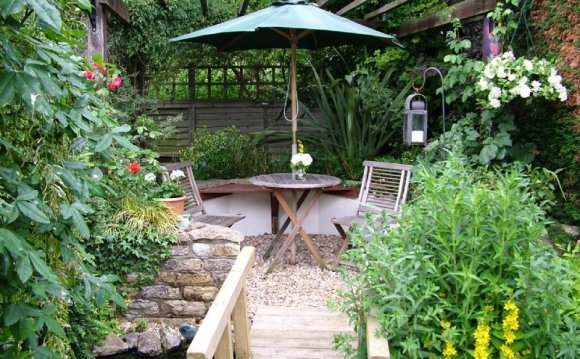
Select plants with:
- Small footprints — plants tagged with the labels “dwarf” or “miniature.”
- Tall silhouettes. Up is the way to go when plotting in feet and not acres. Good choices are container-friendly columnar apple trees or Baptisia australis with spires of violet blue flowers. Another way to get height: a green wall, sometimes known as a vertical of living wall. It’s not only practical, it can be stunningly sculptural.
Plan for your conditions
Sun blocked by tall buildings? Shade-tolerant varieties include:
If your space has a clear sight line to the sun, choose plants like:
More: 10 Foolproof Vegetables for Container Gardens
Recognize your challenges
Rooftops and balconies in high-rise buildings are basically microclimates, buffeted by wind, the radiant heat of concrete, and the shade from neighboring buildings.
Opt for plants known for their hardiness, slow growth, and ability to withstand gusts. The higher the floor, the more wind comes into play in plant selection. Nasturtium and daylilies have flexible stems that sway without breaking. A lattice windbreak adds stylish protection.
Pollution is another issue for urban gardeners. Choose plants with shiny leaves that won’t trap dust:
Save on supplies
Got a budget as small as your space? No problem. No more than $250 is absolutely doable, and covers enough plants for a small space, containers, soil, and basic tools like a hand trowel, pruners, and a hose, says Janine Mudge. She tends a curbside garden outside her Boston brownstone condominium and writes about her hands-in-the-dirt experience on her blog, City Garden Ideas.
Don’t be surprised if you need to set aside part of your budget to replace the occasional plant in street-level plots throughout the season. They’ll take a beating from cars, dogs, and people.
To get the most out of your budget, keep an eye out for no- or low-cost offers. Community groups encourage home owners to garden, often with money-saving programs. Here are four ways to save:
1. Organize a seed swap with friends and neighbors, root stem cuttings, and divide up perennials to keep costs in check, suggests Chris McLaughlin, master gardener and author of The Complete Idiot’s Guide to Small-Space Gardening.
for free supplies like mulch. These organizations also offer soil-testing services, for a small fee, which help maintain healthy plants or diagnose problems.
3. Check your local municipality for freebies. Chicago, for instance, runs a sustainable backyard program with workshops and rebates for trees, rain barrels, compost bins, and native plants.
4. Visit your local botanical garden for free expert advice and gardening workshops.
Blogger Mudge says her street garden has enhanced the value of her home. Greenery not only adds shade, beauty, and privacy, it communicates, “There are people who live here actively caring for their space. They love where they live and show it by tending to these garden spaces.”















